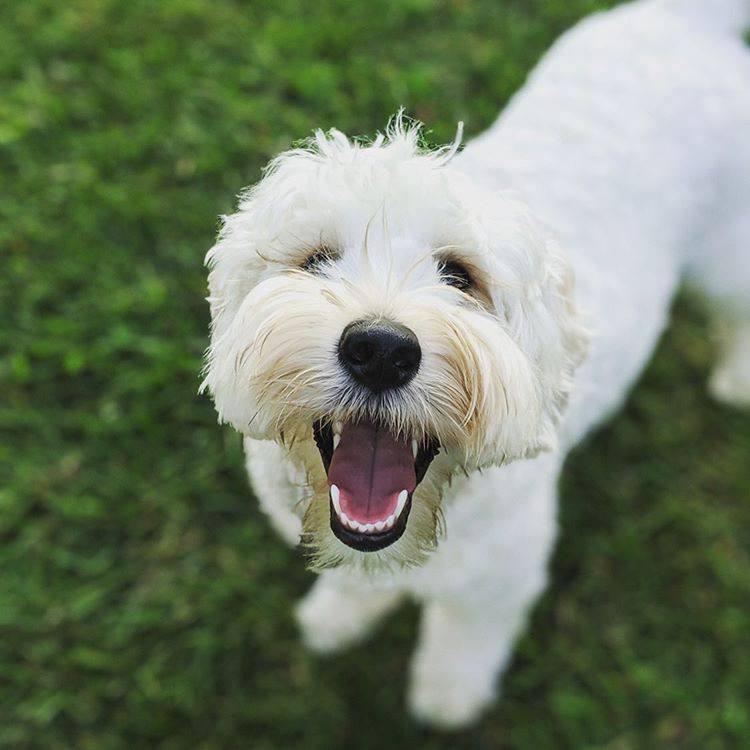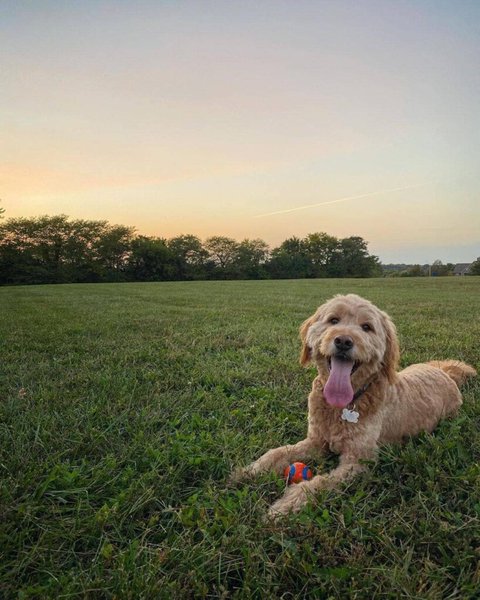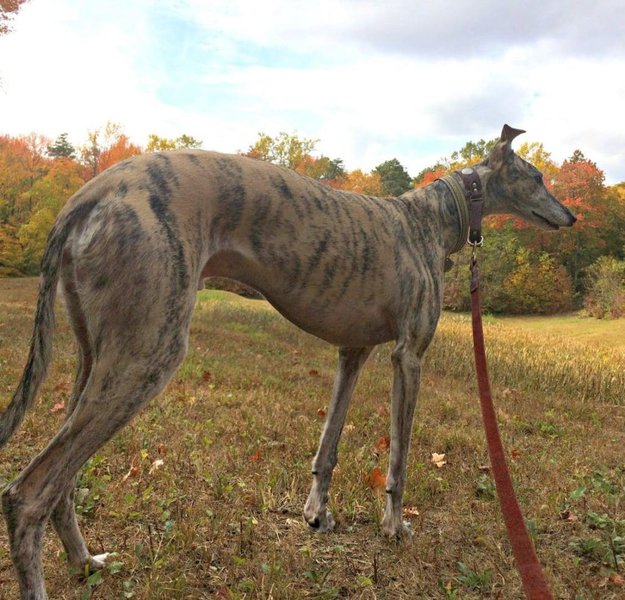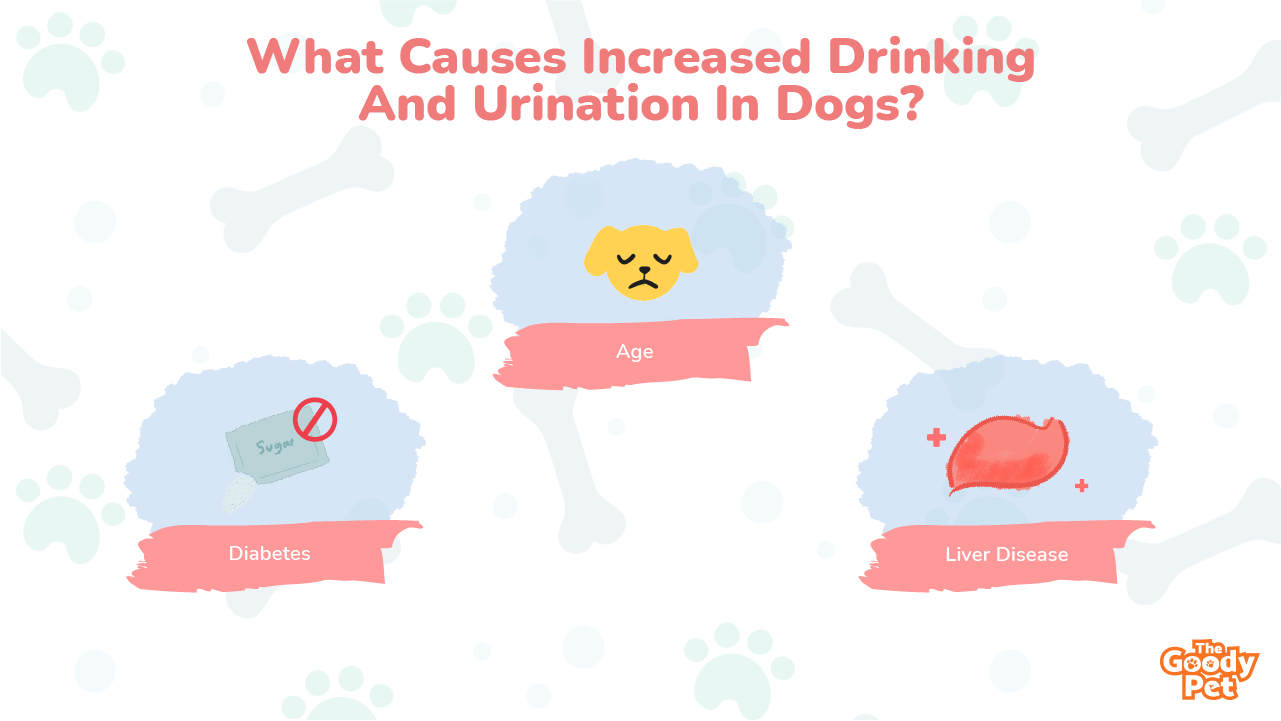It’s a beautiful morning, you stretch, flex, and then roll out to prepare your breakfast but only to step on a puddle of your dog’s pee on the floor. Now you’re thinking if this is just a case of normal and occasional accident or is your dog peeing more than its usual?
As fur parents, we understand your dilemma, and our tip is for you to pay closer attention to the peeing habits of your fur baby. A significant change is a red flag that something’s not right with your pooch.
In general, smaller dogs pee more often than the big guys. If you are not sure if your fur baby is urinating beyond what is normal, continue reading this article because we will talk in-depth about the underlying causes of why dogs pee and drink a lot.
For now, let’s find out the normal amount of water intake based on age and the reasons why your pooch is suddenly gulping a bigger volume of water and peeing more as a result…
Why Is My Dog Peeing So Much All Of A Sudden?
The reasons are varied, it could be a health problem like diabetes, liver disease, or Cushing’s disease. On the one hand, if all tests are done and the results are negative, you can call it a behavioral problem known as Psychogenic Polydipsia.
Did your pooch undergo a spaying surgical procedure? Not to forget that old age has something to do with incontinence.
But, before we delve deeply into the reasons for increased urination, let us first tackle the signs that your pooch is consuming more water than it normally should.
What Causes Increased Drinking And Urination In Dogs?
First, how much water intake is normal? Generally speaking, a healthy dog should consume ⅛ cups of water per pound of body weight. Issues like activity level and type of dog food (wet or dry) should also be factored in.
Frequent urination and excessive drinking may be associated with health issues in dogs. Also referred to as polyuria and polydipsia, these two conditions always appear together. Your pooch drinks more to make up for water loss from too much urination.
Not sure what the signs of polyuria and polydipsia are? Here are some examples:
- Its water bowl is always empty.
- New drinking habits like finding your dog drinking from a puddle or toilet.
- You see puddles of urine around your house.
- Peeing in large amounts.
- Drinking and peeing during ungodly hours or during the middle of the night.
The signs of polyuria and polydipsia we stated above may be brought about by any of the following health problems that causes your dog to pee so much:
Diabetes
High levels of blood glucose often result in more water intake. Difficulty holding urine and incontinence are 2 of the problems your diabetic fur baby goes through.
Liver Disease
The liver has many different jobs including hormone and protein production, metabolism of fats, and detoxification. If the liver is not working well, it results in increased water intake and urination.
Cushing’s Disease
A disease that causes an overproduction of cortisol results in blocking the hormones from performing their job. The effects are too much drinking and peeing.
Age
If you are caring for an older dog, the culprit as to why it is peeing so much may be due to kidney infections, a drop in its hormone level (especially for spayed females), urinary tract infection (UTI), and canine cognitive dysfunction related to age.
Psychogenic Polydipsia
A behavioral problem that is entirely unrelated to any medical conditions. If your pooch is healthy yet drinks and pees too much, your fur baby is most likely bored or is just trying its best to beg for your attention.
Drinking a lot equates to more potty breaks outside of the house with you, that means more bonding time and hopefully a game of fetch.
BUT, what if it’s the other way around, your dog is peeing in small quantities. This is a case of painful urination that may be caused by bladder problems like cystitis, enlargement of the prostate, and prostate cancer. Plus, if your pooch is on steroids medications.

Is It Normal For A Dog To Pee Every 2 Hours?
No, it’s abnormal because a healthy adult dog will only pee an average of 3 to 5 times a day, so that’s an interval of 6 to 8 hours per peeing time.
However, each dog is unique and you should not compare the toilet habits of your pooch with that of your neighbors’. Some of the factors that dictate the frequency of peeing are age, diet, medications, and marking behavior.
Age
Age is a variable that determines the frequency of urination among dogs. Younger puppies who still have underdeveloped bladders and aren’t potty trained pee more often. Plus, it is not just about holding capacity but it is also about muscle control.
And, that is exactly what potty training is all about – to help your pup build its muscles to control its bladder. As they advance in age, these muscles weaken which leads to more frequent trips to the bathroom.
Here’s a chart to help you determine how many times a day should your dog pee:
- Puppies younger than 6 months of age: 1 to 2 hours
- Puppies older than 6 months of age: 2 to 6 hours
- Adults: 6 to 8 hours
- Seniors older than 7 years of age: 4 to 6 hours
- Seniors older than 12 years of age: 2 to 4 hours
Diet
If your pooch is on a moisture-rich diet (wet or raw food), it will pee more because of the higher water content. It’s actually beneficial because wet food aids in digestion and in flushing out toxins.
On the other hand, dogs that are on a strictly dry food diet may pee less but that does not mean that they are healthier. What you have to observe is the frequency and color of the pee. A very dark yellow pee means dehydration.
Medications
One of the side-effects of some prescription meds like steroids is increased thirst. This alters the way your pooch drinks and pees. But, once your fur baby has completed the prescribed meds, its peeing pattern should go back to normal in a few days (every 6 to 8 hours for adult dogs).
Marking
Take note of the difference between peeing and marking. If your pooch sniffs around and marks its territory by leaving small amounts of pee here and there, that is instinctive and normal. What is not normal is when your pooch stops steadily and pees a lot like every 2 hours or even in a lesser interval, say, every 5 minutes.
When To Call A Vet?
If frequent urination is accompanied by lethargy, poor appetite, unusual urine odor, pain while urinating, and dark and red urine color, these are sure signs that you have to seek medical help for your pooch.

How Do You Know If Your Dog Has A Bladder Problem?
If you observe a major change in the amount of water it takes, there is an increased frequency in urination, if you find blood in the urine, and when your dog exhibits pain while urinating, these four signs should alert you of a bladder problem.
The other symptoms to watch out for are incontinence and fever.
Change In Drinking And Urination Frequencies
One tip we want to give is to always be attuned to your dog’s elimination process. In this way, you would know if something is off with your fur baby.
For example, asking for more bathroom breaks is a sign you shouldn’t take for granted. But, let me emphasize that it could also be a form of attention-seeking behavior. However, if frequent urination comes with an insatiable thirst, then that should alert you of a bladder and not a behavioral problem.
Blood In Urine
Though it is not a usual habit for fur parents to inspect the color of their fur baby’s urine, we suggest that you do this if you notice a significant amount of water intake and frequency of peeing.
Blood in the urine is manifested by pink or red discolorations in the urine. If you are unsure, what you can do is to collect a urine sample and have it examined by an expert.
Also, you may find some traces of blood leaking from its genital organ.
Pain While Urinating
Is your dog whining or yelping while urinating? Does it take a longer time for it to finish its business outside? If yes, your dog is in pain while urinating, termed dysuria. It is not uncommon to see dogs with dysuria pee more often but in trickles or in small amounts only.
For some dogs with a severe bladder problem, the inability to urinate at all as a result of pain is a sure sign of a bladder problem.
Incontinence
Also referred to as urine leaking, this may be caused by a minor issue such as UTI, to a more severe bladder problem like a prostate problem in male dogs. In this case, you may find your dog having a hard time holding its urine, hence, there is an increased incidence of peeing inside your home. You may even find urine puddles in different rooms in your house.
Fever
The other red flags for a bladder problem are fever, lethargic behavior, and loss of appetite. For some, there’s also swelling in the lower abdominals.






